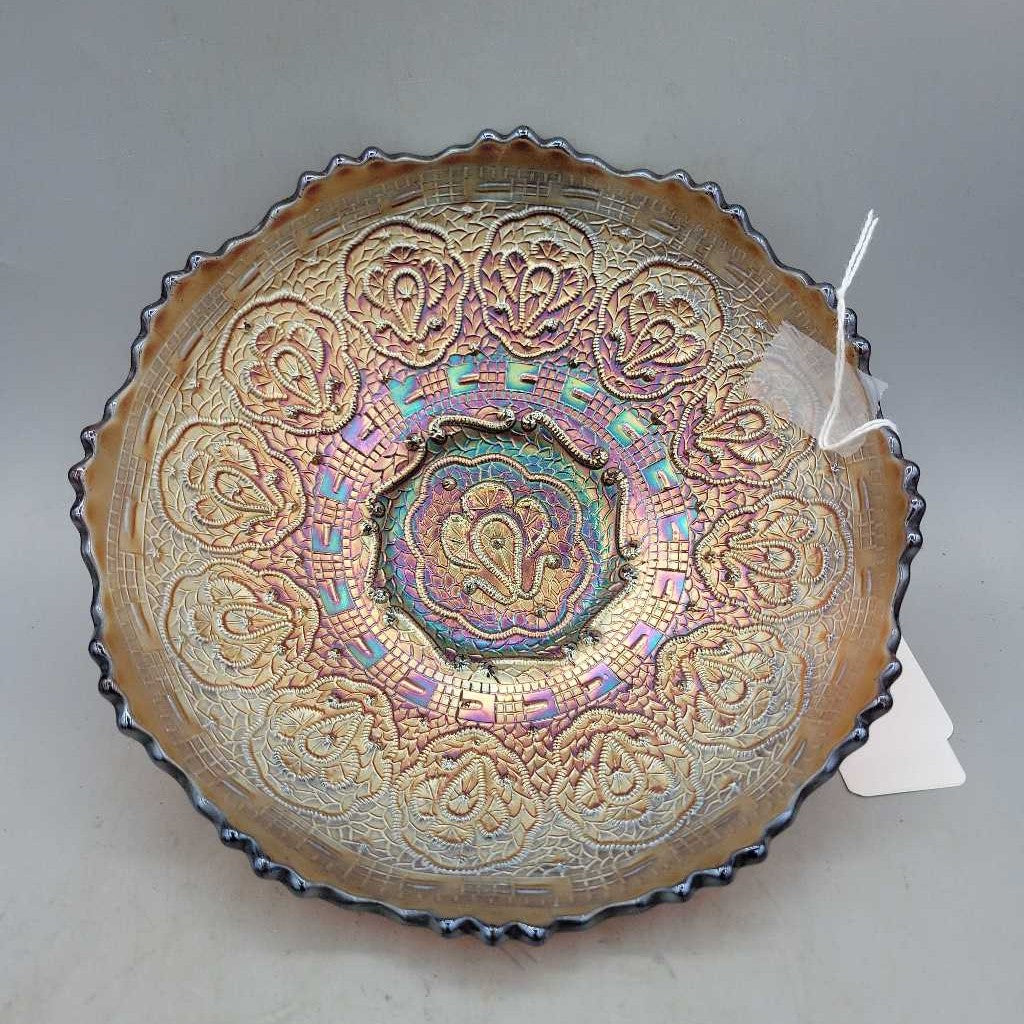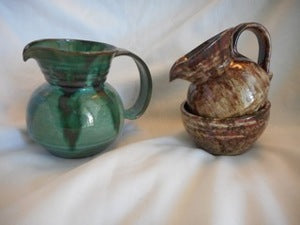Carnival glass is an iridized glass pressed into numerous patterns. It was manufactured between 1905 and 1935 by companies in the United States, England, France, Germany, Australia, Czechoslovakia, Sweden, Finland, Holland, Argentina, Mexico, Peru, China, and India. The iridization was created by applying a spray of chemicals (salts) to the glass surface before firing. This process created a colourful product at a much lower cost than the hand blown art glass of Tiffany and others that it was mimicing. It made carnival an affordable item for the average home or a business premium. The colour of a piece of carnival can be determined by holding the piece up to a light to see the base colour. The various colours of the iridescence or, in some cases, the addition of bands of opalesence tends to obscure the true colour. Marigold (an orange shade) seems to be the most common. However, colours range through the rainbow. The number of patterns ranges into the hundreds. Some are plain, some are intricate, some are made with a comibination of molds from different patterns. Shapes also range through tablewares, decorative items (vases, wall pockets, vases for inside cars, candlesticks), hatpins, beads, punch bowl sets, dressing table items (hair receivers, powder jars), animal figural novelties and paperweights, etc. There were also advertising pieces made for business and product promotion - store giveaways. A majority of pieces found here are American made by companies such as Northwood ,Dugan/Diamond, Fenton, Imperial, Millersburg. These companies were located in Pennsylvania, Ohio, and West Virginia. Some companies used trademarks molded in the glass. For example, Northwood used an underlined capital N. There are collector clubs and many books on carnival glass. Prices fluctuate. However, price is determined by condition, colour, maker and rarity of the pattern. Find some carnival glass in stock now! Carnival Glass
In the the late 1960’s, several American companies introduced a new line of carnival. These pieces can be recognized fairly easily because the iridization is different, the shapes are limited, the colour trend to greens/blues and the patterns are not as crisply molded.




